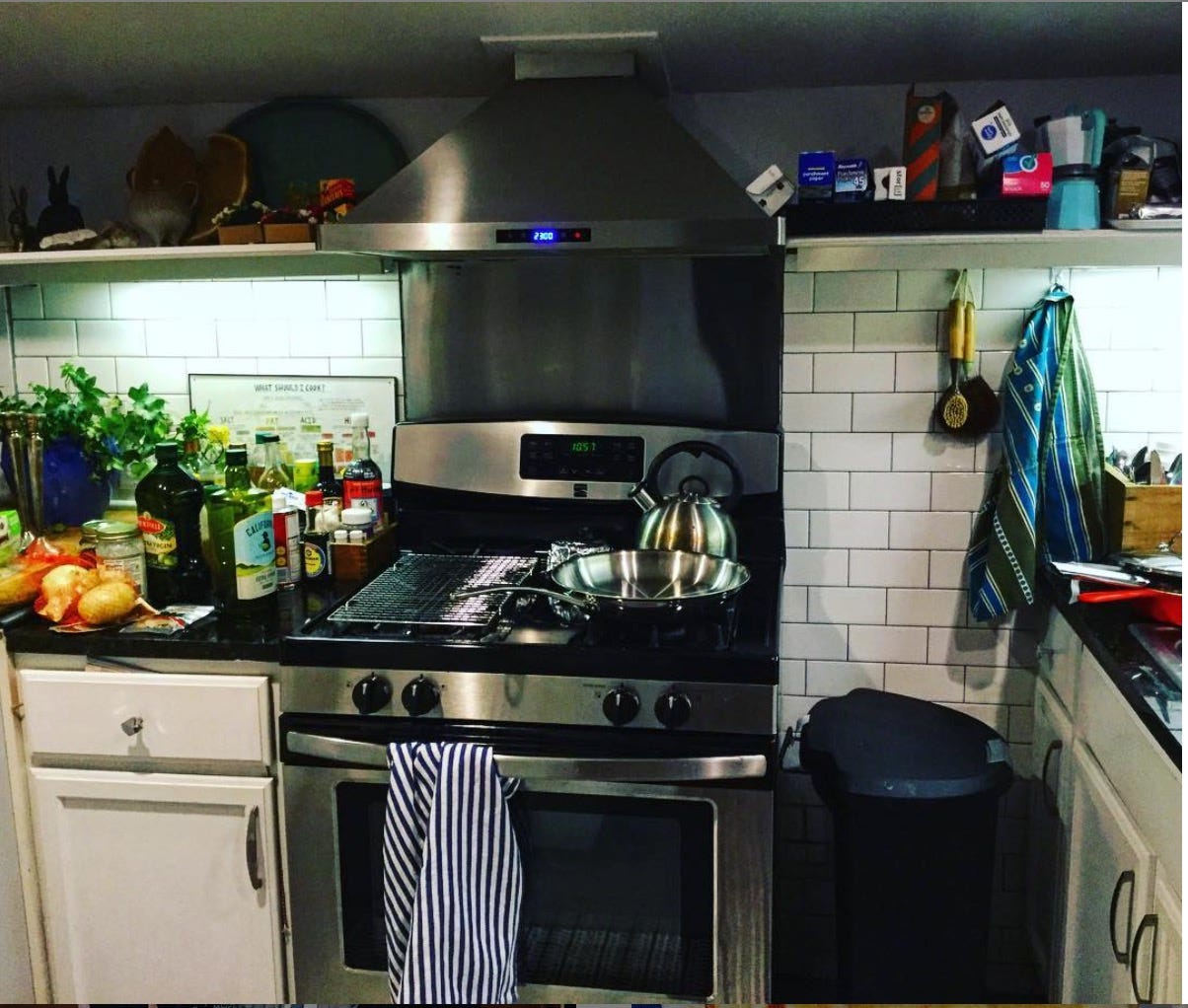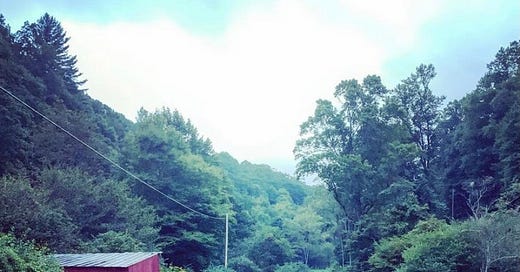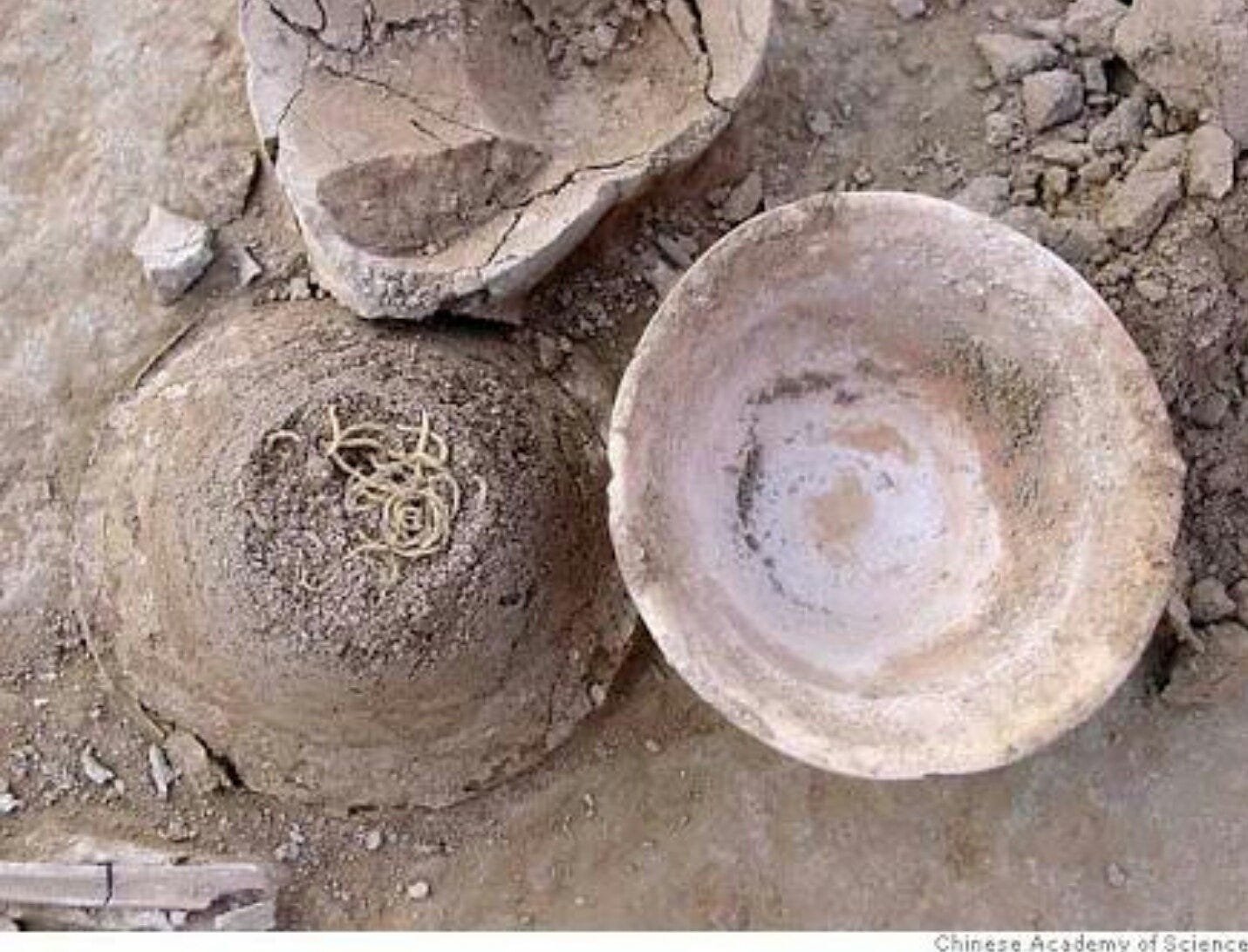Back in March, when the salad lab was located in a barn in a remote part of North Carolina and we had been snowed in and were just learning the ropes of operating a Substack for both paid and free subscribers, we sent this issue, one of our favorites, to paying subscribers only. It should have gone to all of you. We hope you enjoy it now, as we enter a third year of the pandemic, and are all looking for things to be grateful for.
BEING GRATEFUL, IT TURNS OUT, is an absolute balm—something a lot of us seem to have discovered while in captivity this year. Gratefulness: it’s trending!
Years ago, I thought I had to have everything. Give it all to me, now. Get out of my way. I want more.
But that feeling has gone away, for now. For instance: My kitchen is absurdly small and under-mechanized—it’s impossible! I have to be more efficient than is my nature in order not to go mad—but I love it and do not hanker for the shelter magazine ideal. Much. There’s a crazy skunk who doesn’t know she’s nocturnal and who strolls past my front door in broad daylight, forcing me to wait her out if I want to go somewhere without being sprayed. But, I’m kind of fond of this skunk, and I have no place I need to go with any urgency. There are snakes in the summer. My pipes have burst twice during the winter.

I’m sometimes so deathly lonely out here in the mountains that I think I’ve forgotten how to not be alone. And yet: I feel like the luckiest person in the world, as if I was put here, next to this stream—where a blue heron sweeps so low across the meadow that I can hear her wings flapping— to see the world and myself in less tangled way (a way completely undisturbed by actual human interaction, apparently). Sometimes I feel a little trapped. And then spring comes. Still, not long ago, a friend who knows I’m a city person at heart said to me: Emily, how much longer are you going to live out there? You can’t spend the rest of your life taking pictures of flowers and rocks and biscuits. (He actually said this). But, really, can’t I?
This isn’t passive gratitude either. I will whisper to myself: I’m so lucky. I hope this part persists after we’re out of the woods, so to speak, even if it turns out that I’m very unlucky. I just like believing it.
The point of this long-winded buildup is that this shiny new feature of my not great personality has bled into the more practical, everyday aspects of my life. Meaning, I have lately been extremely grateful for food, which I usually take for granted.
Like noodles. Seriously. I look at a noodle and think: Why, what a fabulous idea! How long has this been going on?
Noodles have been a favorite on the world menu for thousands of years, of course; no one knows for how long exactly. There’s an eternal debate about whether they originated in China, Italy, or Arabia, but I find I don’t care much: just fill my plate with them.
I will point out, though, that in 2005, National Geographic reported on the discovery of a 4,000-year-old bowl of noodles in China. “The beautifully preserved, long, thin yellow noodles were found inside an overturned sealed bowl at the Lajia archaeological site in northwestern China. The bowl was buried under ten feet (three meters) of sediment.” Delicious.
They’re a staple in so many cultures— we’ve learned to make them out of almost any kind of flour or starch: wheat, buckwheat, rice, peas, sweet potatoes, etc.—not just because they’re cheap and filling and delicious but because they also seem to make us happy. Noodles pacify us.
Decades ago, I was in Florence with a man I loved and we visited a very old woman (she was probably, like, a year older than I am now), who claimed to be the last living Surrealist painter on earth. (I don’t remember how we knew her. Her paintings were, in fact, quite surreal.) While she was serving us coffee in her cavernous apartment/studio, I mentioned how happy everyone in Florence seemed, and friendly, compared to NYC.
“It’s the pasta,” she said, then recalled how, during the war, no matter how hungry or poor people were they could have the pasta. She told us that local grocers would measure out just the amount of pasta a person could afford, sell them half a cake of bullion.
The very day I got home to New York, someone bumped into me on the train, yelled right into my ear, and, I later discovered, stole my wallet. I never forgot that idea: that the assurance of always having a little pasta, a few noodles, makes humanity not scream at me on the subway.
When I was a kid, we tended to think of noodles in terms of egg noodles topped with a stew or served as a side, coated in butter and poppyseeds, as well as our fake Italian hot dishes or meaty casseroles baked with cheese.
At least until we, meaning the nation, started making cold pasta salad, something for which we created a grand tradition of badness. This is probably why when you mention “pasta salad” or “cold noodle salad” people tend to wince—you can practically see the image of retro elbow macaroni dressed in mayonnaise with little blocks of ham and green peppers floating above their heads. I’m making a terrible face right now just thinking of it.
Which brings me, at last, to another thing I’m extremely grateful for: that I wasn’t born before noodles (in their many forms) became a part of American food landscape. That I got to move to NYC (where I had sushi for the first time in my life, at age 28) and have zaru soba (cold soba noodles, dipped in dashi-and-soy sauce) and cold Chinese sesame noodles, and Vietnamese Bun, and Sichuan Dan Dan noodles and on and on.
And that when I finally moved away, their ingredients were widely available, and I could learn to make these noodle dishes myself to serve to friends and later eat alone during a pandemic, when all the restaurants (none of which I live near) were closed.
These are simple dishes; anyone can make them. I hope you like them.
*Recipe: DOS Cold Sesame Noodles
Serves a little or a lot
Judging from one of my vintage mid-1960s Chinese cookbooks (written by an American woman, of course), cold sesame noodles weren’t much of a thing here mid-century. They apparently evolved, in restaurants, from the more “challenging” and authentic fiery Sichuan Dan Dan noodles, one of my favorites. Which is to say: these are spicy but they go down extremely easy unless you’re a total baby.
This recipe makes a lot of sauce—you spoon it on and toss it with the noodles until you get the consistency you like. But it freezes really well and I like having it around. So if you want to make just 2 servings, don’t cook all the noodles!
For the salad:
Noodles, a pound or a half a pound, depending on how hungry everyone is (Chinese egg noodles, udon, or spaghetti or fettuccine, but you need something substantial—no angel hair or other delicate noodles)
Julienned vegetables: cucumbers, red bell pepper, carrots—a nice little handful for each person/serving. I like a lot. Anything crunchy and colorful is nice
Garnish: Extra chili sauce and roasted salted peanuts for serving
For the dressing:
½ cup peanut butter (some people say only use smooth; I used natural. You can also use chunky)
¼ cup tahini (I used a roasted brand called Joyva)
1 tablespoon toasted sesame oil
¼ cup rice vinegar
2 Tablespoons lime juice
¼ cup chili sauce (such as Sambal Oelek or Vietnamese chili sauce, which is what I used; it is in every grocery store). If you’re not into spicy, start with 2 tablespoons and add extra to taste. It’s supposed to be spicy, though.
2 tablespoons sugar (or more; it can take up to 1/4 cup but you’re not making fudge here)
2 cloves of garlic, cut up
1 -inch piece of ginger, peeled and cut up
2 tablespoons soy sauce, or to taste. If you only have tamari, use less
1/4 cup or so of warm water
Cook your noodles until slightly al dente then immediately run under cold water in a colander. (You can refresh leftover noodles this way, as well.)
Make the dressing: In a blender (I used my bullet blender; it was perfect), combine all the remaining ingredients except for the warm water and process until smooth. Add the warm water a bit at a time; you may need more. You want this to be light not leaden, and have a pourable consistency, like very heavy cream. You can also add a bit more sesame oil here, about a tablespoon.
In a large bowl, toss your cold noodles with enough of the dressing to coat, not drown. Taste. Maybe you want a bit more? Top with the vegetables and show it off at the table. Toss it all together and top with crushed peanuts. Serve with extra hot sauce and peanuts on the side, if desired.
*RECIPE: Vietnamese Rice Noodle Salad (or Bun) with Shrimp
Serves 4-5
For the dressing (aka Nuoc Cham):
1 cup water
2/3 cups good fish sauce (all grocery stores have this and you know it)
1/2 cup fresh lime juice
1 teaspoon grated lime zest
2 large garlic cloves, finely chopped
1/2 cup sugar
2 birdseye chilis (or other hot red chili of similar kaboom level), chopped
Combine all the ingredients in a jar with a tight-fitting lid, shake, and let sit while preparing the salad.
For the salad:
1 pound of shelled, and deveined shrimp (you can leave the tails on; I did not), poached. (I do this by boiling a large pot of water with lemon slices and peppercorns. Turn it off, drop in your shrimp, cover with a lid, and let sit for 5 minutes. Immediately plunge shrimp into an ice bath.)
8 ounces rice vermicelli noodles (available in Asian section of my grocer here, which means available in all other grocers in the nation), cooked according to instructions, and immediately run under cold water in a large colander
1 head romaine, sliced/shredded
1 small daikon radish, julienned, about a cup (I sliced it into rounds with my mandoline, then cut the rounds into julienne)
2 big carrots, julienned
1 English cucumber, unpeeled, julienned
2-3 cups of herbs (I used a mix of mint and cilantro; basil is good, too), stems removed
3-4 scallions, thinly sliced (include some of the nice green tops)
1 cup crushed roasted peanuts
The best way to serve this is to let each person line a bowl with lettuce, top it with some of the noodles, then add whatever amount of shrimp and toppings they desire (I love this with a lot of mint), plus a good soaking of the dressing. You can also place all the ingredients in a giant bowl, bring it to the table to show it off, then toss and serve, with extra scallions, peanuts, and dressing for garnish.
*Recipe: A Very Good Pantry Item Pasta Salad
Serves 4 or so as a main course for lunch
I can’t resist sharing this recipe, even after I just denigrated American cold pasta salads. It’s another one of those recipes that I have been making for decades, and whose origins I do not remember. It’s probably from Metropolitan Home magazine, again, where I got most of my favorite recipes in the 90s. Every single thing in it comes from a can, box, or jar except the fresh lemon juice. It’s so easy and so delicious, full of sparky treats, and makes you feel very clever, even though you didn’t do much beyond boiling some pasta and opening some jars.
1/2 pound shell pasta (I love shells; the olives and beans, etc. get trapped in them like surprises), cooked al dente
1 can cannellini (white kidney beans), drained and rinsed
1 7-ounce can water packed tuna, drained (you can use olive oil packed; just drain it well), broken apart
1 can artichoke hearts, quartered
2/3 cup Kalamata olives, chopped (you can use more)
1 cup chopped roasted peppers (about half a jar; you can use more, but this suits me)
1/4 cup fresh lemon juice
1/4 cup olive oil
1/2 teaspoon sea salt
Freshly ground black pepper
While the pasta cooks, combine all the remaining ingredients, except for the lemon, olive oil, and salt and pepper, in a very large bowl.
In a jar with a lid, combine the lemon juice, olive oil, and salt and shake thoroughly. Pour about half of it over the vegetable mixture, toss gently to combine and let sit for a half hour or so. Taste for salt. Add pepper if desired.
Add the pasta to the large bowl of vegetables and toss gently. From here, you can add more of the dressing (you will have extra), a bit more salt (and pepper if you want it) and that’s it. I’ve never added herbs or anything else.
ALWAYS serve at room temperature. If you serve leftovers, let them sit out for about a half hour, and add a bit more of the dressing.
*Recipe: Shrimp Sandwiches on Toast with Spicy Mayo
Makes 4 sandwiches
Since I poached all that shrimp, I decided to give you an extremely special sandwich I developed while I was working at the Chicago Tribune. It’s a very ladies department store lunch counter sandwich and it makes you feel fancy. It also feels very Springy to me. In the photo, I used a lot more avocado than you need for one sandwich, but it looked so pretty when I sliced it that I decided to lay it on there. One large avocado is plenty for four sandwiches.
1 cup mayonnaise
2 tablespoons minced red onion
1 tablespoon lemon or lime juice
1 tablespoon bottled red chili sauce (such as Sriracha) or to taste
8 slices white bread, toasted (this is good on brioche)
1 pound large cooked, cleaned shrimp, sliced lengthwise
1 large ripe avocado, sliced
1. Whisk together the mayonnaise, red onion, lemon juice and chili sauce in a small bowl.
2. Spread half of the toast slices with 1 tablespoon chili mayonnaise each, or to taste; layer with shrimp, arugula leaves, then avocado. Top with remaining slices of toast; press lightly with palm of hand. Slice on diagonal—always, otherwise the sandwich is completely ruined.
That’s it: We’re finished here. Next week will be a surprise (including to me). After all, who can say what fate awaits us all in this insane, mixed up, bizarre (and also quite pretty) world. But as I always like to say (or as I just started saying): At least we have salad! Thank you for subscribing. If you feel like driving down the paid lane or sharing the Department of Salad with your friends and loved ones who deserve it, you may use the buttons below.













